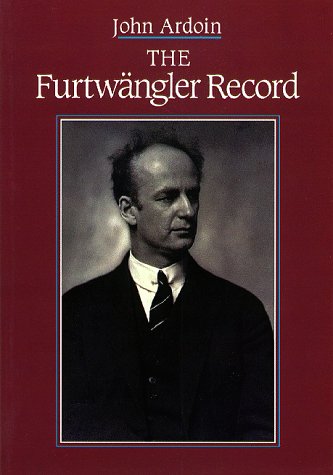
My office this morning is Bagel Beanery. I’m a sucker for bagels, anyway. Plus, I like the coffee here.
And the free wifi (does anyone charge for wifi any more?).
I can sit here for four hours, if I want to, for the price of a bagel and coffee. I call that a bargain…best I ever had (can you name the song from which that line comes?).
 This morning, I am listening to Anton Bruckner’s Symphony No. 9 in D Minor (WAB 109), interpreted by the legendary German conductor and composer Wilhelm Furtwangler (1886-1954).
This morning, I am listening to Anton Bruckner’s Symphony No. 9 in D Minor (WAB 109), interpreted by the legendary German conductor and composer Wilhelm Furtwangler (1886-1954).
This time, his orchestra is the Berliner Philharmoniker.
I’m not going to repeat the background on Maestro Furtwangler, although I do suggest you read up on him.
I first encountered Wilhelm Furtwangler on Day 20, Symphony No. 4.
Then again on Day 28, Symphony No. 5.
Then again on Day 36, Symphony 6.
Then again on Day 44, Symphony 7.
Then again on Day 52, Symphony 8.
The first link above will give you a good idea who the man was and what he was known for regarding his conducting style.
 From page 236 of John Ardoin’s book The Furtwangler Record (which I have, by the way; it’s an invaluable resource for Furtwangler fans):
From page 236 of John Ardoin’s book The Furtwangler Record (which I have, by the way; it’s an invaluable resource for Furtwangler fans):
Given the mystical and less forthright properties of the Bruckner Ninth, the results would surely have been even more revelatory. To [Furtwangler], a performance of the Bruckner Ninth was a religious experience.
Like the Eroica from the same fall, the Bruckner Ninth is a performance of disquieting intensity, especially in the two outer movements. Many have believed that the adagio of Beethoven’s Ninth had a pervasive influence on Bruckner’s slow movements…
Few other composers have ventured so deeply into the spiritually intangible, and nowhere is this more acutely felt than in the Ninth.
On to the objective stuff:
 Bruckner’s Symphony No. 9 in D Minor (WAB 109), composed 1887–1896
Bruckner’s Symphony No. 9 in D Minor (WAB 109), composed 1887–1896
Wilhelm Furtwangler conducts
Furtwangler used the “1932 Orel Edition,” according to the liner notes
The Berliner Philharmoniker plays
The symphony clocks in at 58:38
This was recorded on October 7th of 1944
Furtwangler 58 was when he conducted it
Bruckner was 72 when he died before he complete it
This recording was released on the Music & Arts Programs of America label
Bruckner wrote his symphonies in four movements. He would have done so this time, as well, but he died before completing the Finale. The time breakdown of this one (Symphony No. 9 in D Minor), from this particular conductor (Furtwangler) and this particular orchestra (Berliner Philharmoniker) is as follows:
I. Feierlich, misterioso………………………………………………………………………….23:35
II. Scherzo. Bewegt, lebhaft; Trio. Schnell………………………………………………………………………………………………….09:27
III. Adagio. Langsam, feierlich………………………………………………………………………………………………..25:36
IV. Finale: None……………………………………………………………………………………00:00
Total Time: 58:38
Of the 1932 Orel Edition Furtwangler used, its entry on Wikipedia tells us,
Orel edition (1932)
This was the first edition that attempted to reproduce what Bruckner actually wrote. This version was first performed in 1932 by Siegmund von Hausegger with the Munich Philharmonic Orchestra. In the concert, the symphony was performed twice, first in Löwe’s edition and then in the Orel version. It includes only the first three complete movements.
Okay. Now, here’s the subjective stuff…
My Rating:
Recording quality: 4 (not bad for a recording made in 1944)
Overall musicianship: 4
CD liner notes: 4 (thin booklet – in English only – that’s an excerpt from John Ardoin’s book The Furtwangler Record published in 1994)
How does this make me feel: 5
This is a magical performance from start to finish. The Scherzo, alone, is worth the price of admission. It is as powerful as it’s supposed to be, at the tempo in which I like hearing it.
The Adagio is just plain brilliant.
This Furtwangler recording is a perfect example of “magic” being in a performance even though the recording quality isn’t up to today’s standards. This particular recording is 73 years old. To put that in perspective, one of my favorite movies – the Fred MacMurray/Barbara Stanwyck noir classic Double Indemnity – was released that same year. The top song of 1944 was Bing Crosby’s Swinging On A Star.
That’s a long, long time ago.
And here I am enjoying a recording from Furtwangler from that same year.
Ain’t life grand?
“Huzzah!”
(Psst. Only three days left!)
